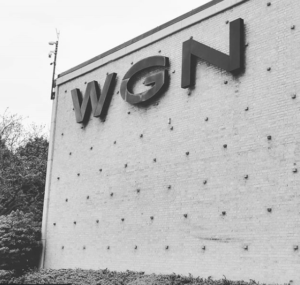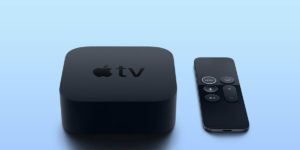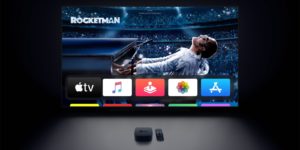The term sustainability has multiple definitions. It can refer to environmental conservation or to the quality of “enduring” in an ever-evolving future. If we talk about the carbon footprint of cable TV, then rest assured that it is certainly lower than streaming TV’s aggregate power consumption but still not clean enough to beat fiber optic’s green technology. Regardless, certain cable companies like Cox cable TV are working on developing next-gen set-top boxes, which combine sustainability with innovation, improving cable TV’s contribution to the health of the globe.
Embedded in the nuance of sustainability, besides the “zero waste” connotation, is the concern for the future. Can cable TV keep up with the strides of competition and last indefinitely?
Or, will it perish under the weight of streaming TV’s popularity and the piling number of cord-cutters? Let’s find out below.
The Case Against Cable TV
If you were born before the 2000s, you would not have imagined that the cable TV entertaining your home would one day become antiquated. Since 2013, the count of cable TV subscribers has been gradually declining, around 10% per quarter, according to Nielsen’s ratings. Why?
Here are a few possible reasons:
Better Rivals
Cable TV may have dominated the television industry for a long time, but it is currently being challenged by the mass of streaming services like Netflix, Amazon Prime Video, and Disney+ that are popping up in this era. These new competitors are posing fundamental threats to cable TV’s monopoly by providing top-ranking TV shows and movies over the internet and eliminating the need for set-top boxes.
To the dismay of cable companies, streaming services are finding favor among the American viewership and pushing a huge chunk of customers to abandon their cable subscriptions.
Unwatched Content
Consumers have become quite conscious of their spending, these days. Due to the availability of alternatives, they are no longer willing to pay extravagantly for cable TV packages and hundreds of channels that they don’t even watch. An average cable lineup consists of 120+ TV networks. It is impossible for one user to tune into all of these in a sitting and unfair for them to pay for these, regardless.
Streaming services let consumers pick and choose their daily quota of entertainment and only bear its expenses. Nothing more, nothing less. This personalization goes a long way in satisfying people.
Rate Hikes
One of the major concerns of cable customers is that when the bill comes over at the end of the month, they aren’t left with much of a choice but to drain their savings for the sake of entertainment. An average cable bill costs consumers around $120 a month, which when viewed in an annual context, is enough to give anyone a heart attack.
Besides the main service cost, these bills often include hidden charges, taxes, fees, and surcharges, which increase over time, faster than inflation. This is not the case with streaming services, which have transparent pricing and unbeatable affordability. Though streaming costs also grow with time, the hike is often minimal and unnoticeable.
The Case For Cable TV
Despite everything, 90 million pay-tv subscribers continue to stick to their cable companies in 2021. That makes up 56% of adult viewership in America, which is still greater than average. Though terribly under pressure from streaming services, cable companies are persisting against all odds. What’s their secret for enduring?
Here are the top merits of cable TV:
Live Programming
Fox News, MSNBC, HGTV, ID, Nick, A&E, ESPN, History Channel, CNN, and Food Network are some of the most-watched channels on national television. It is difficult to find them on the vast libraries of streaming platforms. Especially, live news and sports programming are hard to come by, except on cable TV. Thus, due to the merit of its live programming, cable television holds its ground.
Although there are live TV streaming services available online, they are either too expensive or too insufficient to meet the needs of common consumers, which is why people prefer to watch the good old cable television and live news broadcasts.
Favorable Linear Model
Streaming services have indeed taken over the media industry and television market. Consumers have way too many options on their hands these days. They can go for Netflix, Hulu, Peacock, and other streaming services, as per their entertainment appetite. Surprisingly, such a huge diversity of choice has also exerted a negative side effect on the American viewership, who have started craving for the simpler times of linear programming, the prime feature of cable TV.
Linear broadcasts of television episodes and made-for-TV movies that we all grew up watching have nostalgic importance that cannot be denied. This straightforward broadcasting model has also found favor among the generations of this era, who are fed up with the onslaught of streaming options at their hands.
TV Streaming Apps
Seeing the rise of streaming technology, cable companies have also upgraded their offerings and made their shopping experience more interactive for consumers. You can get customized bundles and add-on services that suit your budget and lifestyle. Most importantly, TV providers have integrated the top streaming apps like Netflix and HBO Max in their set-top boxes, so you can enjoy the best of both worlds in one unified package.
You can also find some cable companies handing out their own signature streaming apps, which you can download on your devices, and watch your favorite on-demand titles, live TV networks, and DVR recordings on the go, over the internet. This innovation has definitely shown an evolving side of cable TV, which is future-ready.
Final Verdict
So, is cable TV sustainable? We think so. Though it may have suffered some serious losses along the way due to the threat of streaming services, the cable TV domain has exhibited incredible growth in the form of a refined shopping experience and streaming integration, as evident in the aforementioned pointers.
From the looks of it, cable TV is here to stay and if it keeps this reformative journey up, it will endure in the future, as well.





